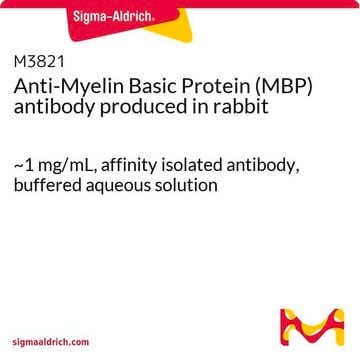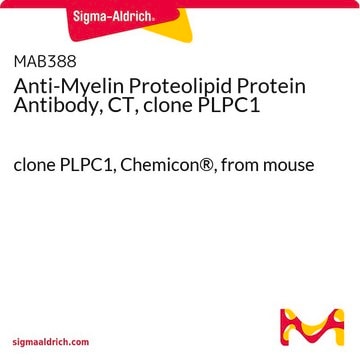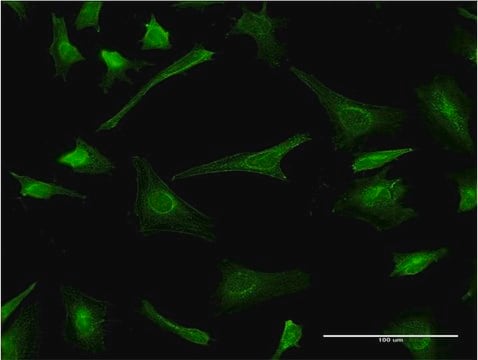MAB1567
Anti-Myelin Associated Glycoprotein Antibody, clone 513
clone 513, Chemicon®, from mouse
Synonym(s):
MAG
About This Item
Recommended Products
biological source
mouse
Quality Level
antibody form
purified immunoglobulin
antibody product type
primary antibodies
clone
513, monoclonal
species reactivity
mouse, rat, frog, bovine, chicken, human
manufacturer/tradename
Chemicon®
technique(s)
immunocytochemistry: suitable
immunohistochemistry: suitable
western blot: suitable
isotype
IgG1
NCBI accession no.
UniProt accession no.
shipped in
dry ice
target post-translational modification
unmodified
Gene Information
human ... MAG(4099)
General description
Specificity
Immunogen
Application
Neuroscience
Neuronal & Glial Markers
Neurochemistry & Neurotrophins
20 μg/mL of a previous lot was used on western blot under non-reducing conditions only.{See Ellezam, 2003}
Immunocytochemistry:
5-10 µg/mL of a previous lot was used, methanol fixation required.
Optimal working dilutions must be determined by end user.
Quality
Immunohistochemistry(paraffin):
Representative image from a previous lot.
Mouse anti-Myelin Associated Glycoprotein [MAG] (Catalog Number MAB1567) localization of MAG in rat hippocampus. Photo courtesy of Dr. Robert Sloviter, University of Arizona.
Target description
Physical form
Storage and Stability
Analysis Note
Rat hippocampus tissue, rat brain lysate, PC12 cells.
Other Notes
Legal Information
Disclaimer
Not finding the right product?
Try our Product Selector Tool.
recommended
Storage Class Code
10 - Combustible liquids
WGK
WGK 2
Certificates of Analysis (COA)
Search for Certificates of Analysis (COA) by entering the products Lot/Batch Number. Lot and Batch Numbers can be found on a product’s label following the words ‘Lot’ or ‘Batch’.
Already Own This Product?
Find documentation for the products that you have recently purchased in the Document Library.
Our team of scientists has experience in all areas of research including Life Science, Material Science, Chemical Synthesis, Chromatography, Analytical and many others.
Contact Technical Service








